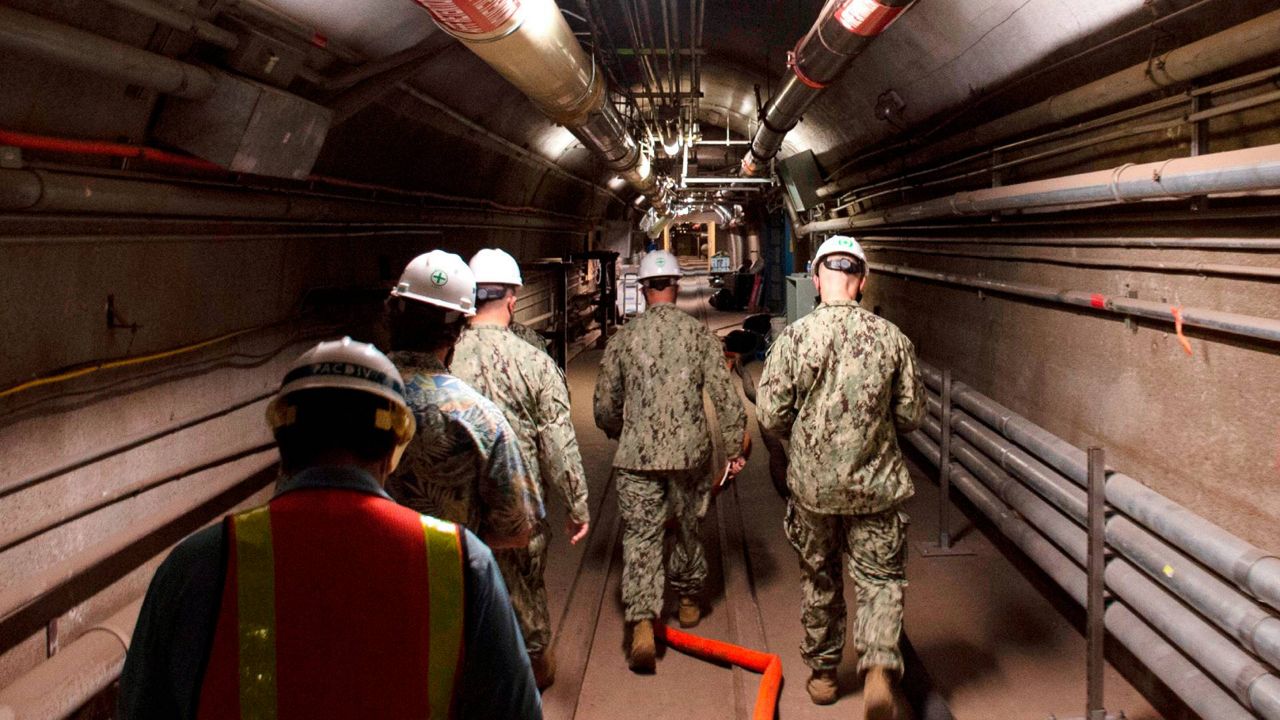HONOLULU — The health officials and lawmakers asked, again, for transparency, accountability and a sense of urgency. The Navy representatives asked for patience and pledged, again, to demonstrate each of those things.
The former questioned why they should believe those pledges when, more than eight months after leaked jet fuel contaminated the Navy’s water system and the endangered of the island’s water supply, the latter has apparently failed again to make good on their promises.
And so it went at Tuesday’s joint information briefing on the Red Hill Bulk Fuel Storage Facility investigation and defueling plan hosted by the state Senate Committee on Health and the House Committee on Health, Human Services and Homelessness with participation of the state Department of Health.
The hearing included Navy presentations on its internal investigation into the chain of events and decisions that led to the water-contamination crisis and its plans for defueling the controversial facility in preparation for its permanent closure.
Rear Adm. Stephen Barnett presented a five-step plan that includes assessment; repair planning and removal of fuel from fuel lines; execution; quality assurance; and the actual defueling.
According to Barnett, the assessment phase is complete and the planning and removal of fuel from fuel lines will be done by the end of August.
The third phase, which will involve repairs necessary to prevent leakage or other problems during refueling, is expected to take 17 months, in part because the uniqueness of the facility necessitates that some of the repairs need to be specially designed and will likely include materials that need to be transported from the Mainland.
The defueling itself will take between four and eight months and is expected to be completed by end of 2024,
Barnett said the plan that was submitted was a “framework” that will continue to be updated as individual goals are met and as the Navy obtains more information about mitigating factors such as supply chain issues.
DOH director Libby Char called the defueling plan “very incomplete.” She asked that plans be submitted to her department with sufficient time for review and comment and that clarification and further information be provided regarding unpacking the fuel tanks, repairs and other operations that are not fully accounted for in the submitted plan. She also asked for a complete spill-prevention response plan.
“The DOH has a single-minded focus on defueling and decommissioning Red Hill to protect public health and the safety of the people of Hawaii and the environment,” said DOH deputy director of environmental health Kathy Ho. “We need the Navy to feel the same sense of urgency we feel and that safely defueling and decommissioning the tanks will be in the best interest of everyone.”
The Department of Health does not approve the current defueling plan,” Ho said. “The highly anticipated defueling plan was disappointing. It lacked substance, specific detail and dates. The emergency order set forth a minimum of seven elements that the defueling plan must address. The submitted plan did not completely address any of these elements.”
Legislators, too, wasted no time in expressing their discontent with the defueling plan, which they criticized for lack of detail and protracted timeline.
“It troubles me that (the defueling plan) is so incomplete, missing plans, missing details … a plan that is so disappointing, that is so critical, is so incomplete,” said state Sen. Donna Mercado Kim. “It worries and concerns me that this has been the practice of the Navy in the entire situation that we’re in, how can we have any more confidence that this is going to take place and (the Navy) is not going to keep delaying?”
Barnett and Rear Adm. Dean VanderLey repeatedly assured the legislators that the Navy would proceed without unnecessary delay but with safety as its overarching concern.
That drew a pointed rebuke from Rep. Jeanne Kapela.
“You folks have talked a lot about safety and move at the speed of safety but the reality is that every second that we wait, every moment that we wait to commence defueling operations could possibly lead to another public health and environmental catastrophe,” Kapela said.
The criticisms echoed concerns raised by Honolulu Board of Water Supply manager and chief engineer Ernie Lau. At a press conference on July 1, Lau called the proposed plan “alarmingly devoid of detail” and said the timeline for completion was “unacceptable.”



